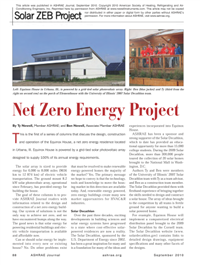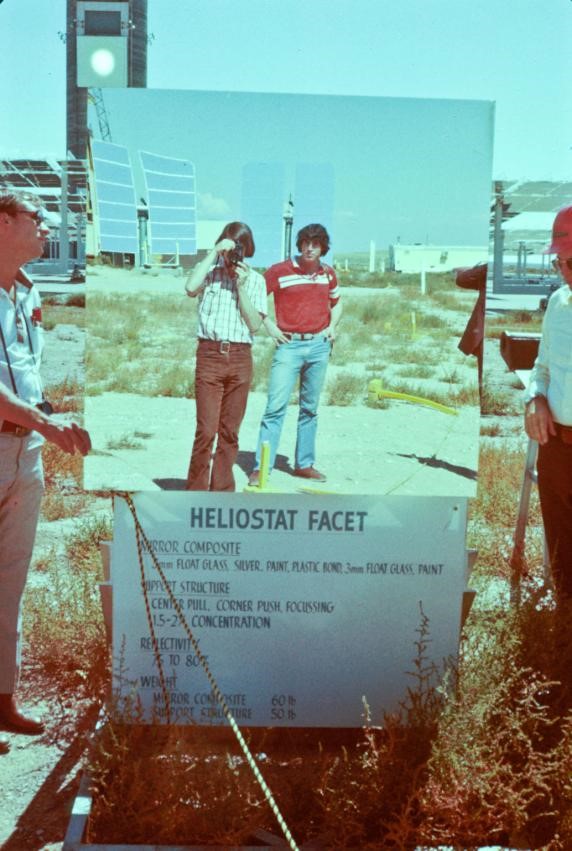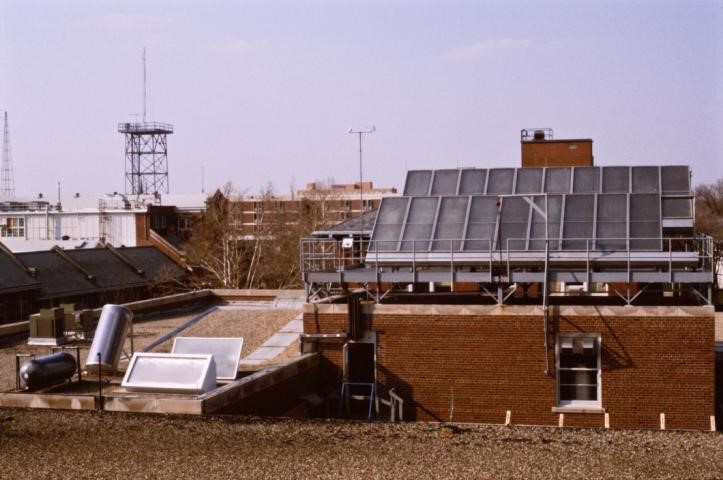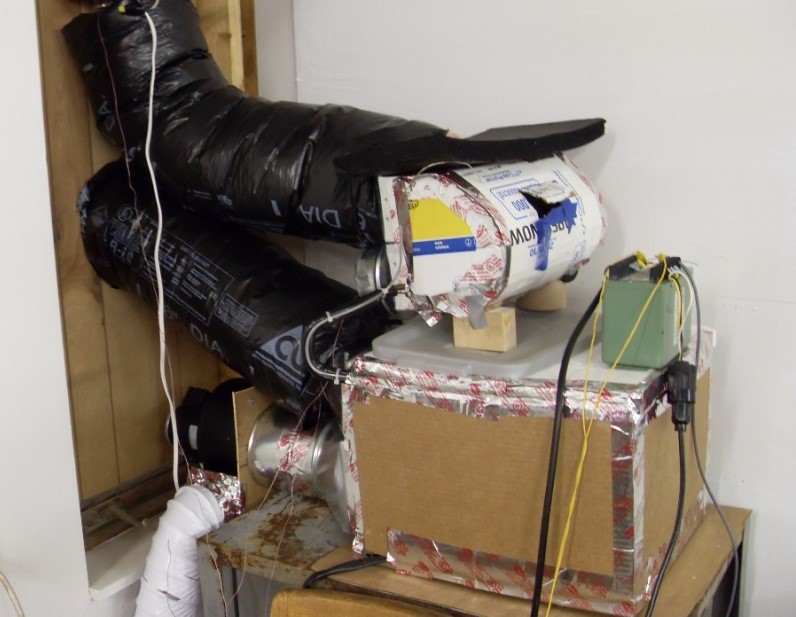
Our first of 12 articles for the ASHRAE Journal introduced Equinox House, a net zero energy home we designed and built in Urbana Illinois. We thought readers might like to learn a bit about Ben, Alex and Ty, co-founders of Build Equinox and inventors of CERV and CERV2 smart ventilation technologies.
Construction of Equinox House began 10 years ago this month, in December 2009. The weather had turned horrible, with snow falling on the day we poured the concrete slab. As miserable as the weather had become, we were excited to begin our journey to demonstrate economically feasible, solar powered living.
Planning for a solar house started decades earlier, when Ty started graduate school at the University of Utah in 1976, studying solar energy engineering under Bob Boehm (a great mentor and now, Distinguished Professor of Mechanical Engineering at UNLV). Ty’s master degree research investigated solar thermal energy collection and storage for residential and industrial heating applications. His doctoral work examined solar ponds, which are large scale, integral solar thermal energy collection and storage systems.
Ty joined the mechanical engineering faculty at the University of Illinois in 1980, with 1 year old Ben in tow, and started the Solar Energy Laboratory. Surrounded by wonderful faculty colleagues and students, Ty continued research and teaching in sustainability topics for the next 3 decades, retiring from campus in 2007 to return to the “frontlines” to work with Ben in the battle for sustainable living.
A lot happened during those 3 decades, with advances in materials, computational sciences, communication technologies, and an economic shift that favors renewable energy powered living over “conventional” energy technologies. Two welcome developments were the cost reduction of solar photovoltaic panels and development of high efficiency, “low temperature” heat pumps for residential comfort conditioning and water heating.
Jigar Shah, a student of Ty’s in the late 1990’s and founder of Sun Edison, is very well known for his efforts to move us to a carbon-free future. He developed a successful business model for accelerating the growth of large scale solar energy systems that continues to be the basis for financing renewable energy and energy efficiency projects today. Jigar foresaw the cost and performance superiority of solar PV over solar thermal energy and conventional energy systems. By 2005, when Ty and Ben (now a graduate student in the University of Illinois MBA program) were members of the 2007 University of Illinois Solar Decathlon team, the handwriting was on the wall that solar PV electricity coupled with heat pumps would displace solar thermal energy systems in the residential sector. The UI “Elementhouse” was the first all electric Solar Decathlon home, featuring a heat pump water heater and house heat pump comfort conditioning system.
As you will learn in this newsletter series, Equinox House is an all-electric, solar photovoltaic (PV) powered home, and one of the very first in North America to feature heat pump comfort conditioning, heat pump smart ventilation (CERV), heat pump water heating and heat pump clothes drying. Aren’t heat pumps unreliable and expensive? No and no. As we will discuss, today’s heat pumps are extremely reliable. In fact, properly designed heat pumps outlast electric resistance heaters for space heating, water heating and clothes drying. And, as far as cost, heat pumps are beneficial on both personal economics (payback) and global (employment) bases. We will discuss these aspects of heat pumps as we reach those article topics in our series.
The Solar Decathlon provided Ben and Ty with the confidence and experience to design Equinox House, knowing that solar powered living is technically feasible and economical. The experience also provided us with an awareness that active management of indoor air quality was an unmet need in homes, and especially essential in the rapidly developing field of sealed and insulated high performance homes. As we worked to design Equinox House, we started with a clean sheet of paper to design an automated, smart way to continuously maintain a healthy indoor environment.
Alex Long joined Build Equinox as we began our initial research into air quality management, providing our team with depth and breadth in controls engineering. We have known Alex forever, literally. He was in diapers when we first met, and grew into a talented engineer with incredible depth and breadth in multiple areas. Alex also has an artistic flare, with his work on display in all of our graphics and control screens.
Our original efforts were directed toward developing an air quality system for Equinox House. We presented results of our novel heat pump based fresh air exchanger at the 3rd North American Passive House conference in Duluth in 2008 (we had attended the 2nd NAPHC in Urbana in 2007, giving a presentation on Elementhouse and the Solar Decathlon). As we turned the prototype CERV (Conditioning Energy Recovery Ventilator) into reality, we heard from others who were interested in what we were doing, and dissatisfied with the current state of home indoor air quality management systems. We explored introducing the CERV into the marketplace because no residential ventilation system, to this day, has placed indoor air quality as its priority, and we suffer because of it.
Our current focus is on growing smart ventilation into homes in order to create truly healthy indoor environments that improve our health and well-being, however, we conduct research into the design, construction and operation all facets of the home. The house is a complex system of interconnected components, and as such, a home’s ventilation system is related to its insulation and its windows and its appliances and, and, and... It is imperative that anyone working on home performance has an understanding of how their work impacts the function of other aspects of house operation. Our ZEROs (Zero Energy Residential Optimization software, our free-to-use, online software for design and economic analyses of homes) house performance prediction model demonstrates the synergistic nature of house operation.
Florence Nightingale expressed this better than anyone, 160 years ago. If architects and builders were responsible for paying for the health of their building’s occupants, we would have much different buildings than we do today.






 A younger version of Ty taking a picture of himself in a heliostat mirror at Sandia Labs central receiver facility in 1978.
A younger version of Ty taking a picture of himself in a heliostat mirror at Sandia Labs central receiver facility in 1978. Ty established the University of Illinois Solar Energy Laboratory in 1980.
Ty established the University of Illinois Solar Energy Laboratory in 1980. Ben’s hours of sanding and painting paid off with a best design award at the Pinewood Derby, and his attention to detail continues today.
Ben’s hours of sanding and painting paid off with a best design award at the Pinewood Derby, and his attention to detail continues today. The very first CERV, as all good prototypes, started out with an adequate amount of cardboard and tape. Results from our initial testing were presented by Ben and Ty at the 3rd North American Passive House Conference in Duluth MN in 2008.
The very first CERV, as all good prototypes, started out with an adequate amount of cardboard and tape. Results from our initial testing were presented by Ben and Ty at the 3rd North American Passive House Conference in Duluth MN in 2008. Alex is wondering where this photo came from (Ty took it many years ago). We used to toss Alex in the playpen with Ben’s youngest sister before Alex could walk. Looking at this picture, we should have known he was destined to become an engineer!
Alex is wondering where this photo came from (Ty took it many years ago). We used to toss Alex in the playpen with Ben’s youngest sister before Alex could walk. Looking at this picture, we should have known he was destined to become an engineer! It’s hard to figure out which direction is the right one. We hope our experience provides others with the confidence that economical, sustainable living is available now. Education is an essential ingredient for establishing a self-sustaining future for future generation, and an important part of our mission.
It’s hard to figure out which direction is the right one. We hope our experience provides others with the confidence that economical, sustainable living is available now. Education is an essential ingredient for establishing a self-sustaining future for future generation, and an important part of our mission.

















